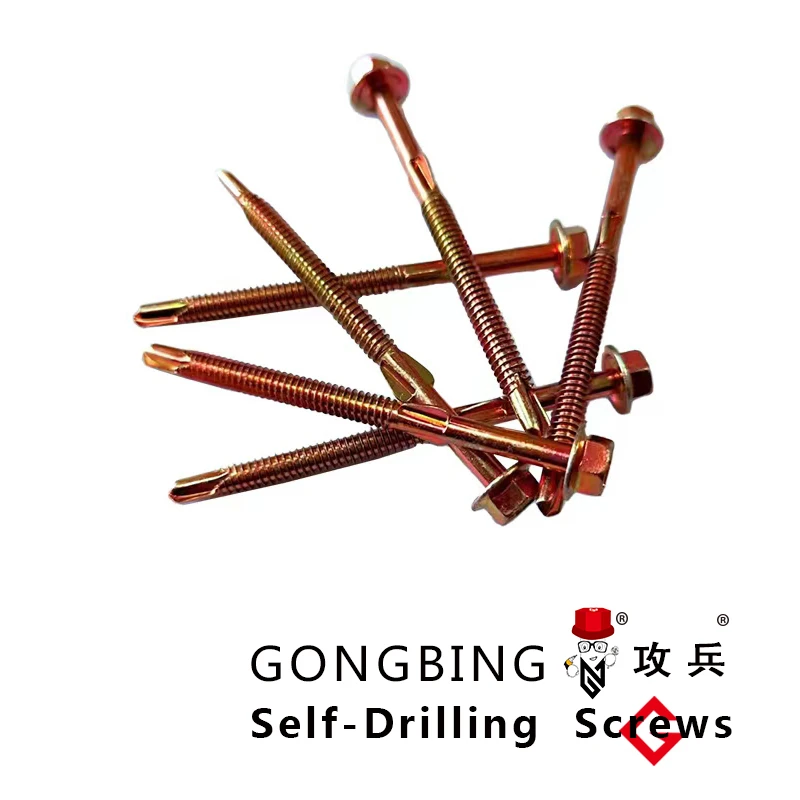Wedge Anchor Fasteners for Secure and Reliable Heavy-Duty Applications and Installations
Understanding Wedge Anchor Fasteners Versatile Solutions for Structural Integrity
Wedge anchor fasteners play a crucial role in the construction and engineering industries, providing robust and reliable fastening solutions for various applications. These mechanical anchors are designed to secure objects to concrete, offering exceptional strength and stability. In this article, we'll delve deeper into what wedge anchor fasteners are, their applications, installation processes, and the benefits they offer.
What are Wedge Anchor Fasteners?
Wedge anchors are a type of mechanical anchor specifically utilized for anchoring heavy loads to concrete surfaces. They consist of a threaded rod, a wedge-shaped expansion clip, and a nut. The anchor works by expanding against the concrete when the nut is tightened, creating a secure bond that resists tension and shear forces. This expansion mechanism is what distinguishes wedge anchors from other anchors, making them particularly effective for heavy-duty applications.
Applications of Wedge Anchors
Wedge anchors are ideal for a variety of applications where significant loads need to be supported. Common uses include
1. Structural Supports Wedge anchors are commonly used in securing structural elements, such as beams, columns, and frame structures, to concrete foundations.
2. Heavy Equipment Installation Industries often rely on wedge anchors to securely fasten heavy machinery and equipment, preventing movement and ensuring operational safety.
3. Railings and Fencing In public infrastructure, wedge anchors are utilized to install railings and fences, providing stability and security for pedestrians.
4. Concrete Fixtures Wedge anchors are perfect for attaching fixtures like lighting, signage, and other hardware to concrete surfaces.
5. Wall Bracing In construction, they are used to secure wall bracing systems that add rigidity and strength to structures.
Installation Process
Installing wedge anchor fasteners requires careful planning and execution to ensure optimal performance. Here is a general step-by-step guide
wedge anchor fastener

2. Prepare the Hole Using a hammer drill, create a hole in the concrete that's slightly deeper than the length of the anchor. The hole diameter should match the anchor's size.
3. Clean the Hole Remove any dust or debris from the hole using a wire brush or compressed air, as this ensures better bonding and adherence.
4. Insert the Wedge Anchor Place the wedge anchor into the hole, ensuring that it is at the correct depth.
5. Tighten the Nut Using a wrench, tighten the nut on the wedge anchor. As you do so, the expansion clip will activate, expanding and gripping the surrounding concrete.
6. Check for Stability After installation, check the anchor's stability by applying load to ensure it is securely fastened.
Benefits of Wedge Anchors
The use of wedge anchor fasteners offers various advantages, including
- High Load-Bearing Capacity Wedge anchors are designed to support substantial loads, making them ideal for heavy-duty applications.
- Ease of Installation The installation process for wedge anchors is relatively straightforward, requiring standard tools and skills.
- Versatility Available in various sizes and materials, including stainless steel and zinc-plated options, wedge anchors can accommodate different environmental conditions and aesthetic needs.
- Resistance to Withdrawal Unlike other types of anchors, wedge anchors provide superior resistance to withdrawal forces, making them suitable for vertical installations.
- Cost-Effectiveness Their longevity and reliability can lead to reduced maintenance and replacement costs over time, making wedge anchors a cost-effective choice for contractors and builders.
Conclusion
Wedge anchor fasteners are indispensable tools for ensuring the structural integrity of various constructions. Their robust design, ease of installation, and versatility make them a preferred choice for professionals in the construction industry. Whether securing heavy machinery, installing railings, or supporting structural components, understanding the workings and benefits of wedge anchors can lead to safer and more reliable construction practices. As the industry evolves, these anchors will continue to play a critical role in meeting the demands of modern engineering and construction.
-
Weatherproof Plastic Expansion Anchors for OutdoorNewsJun.06,2025
-
Sustainability in the Supply Chain: Eco-Friendly TEK Screws ProductionNewsJun.06,2025
-
Load-Bearing Capacity of External Insulation FixingsNewsJun.06,2025
-
Double Head Bolts: Enhancing Efficiency in Industrial MachineryNewsJun.06,2025
-
Corrosion Resistance in Chipboard Screws: Coatings for Wholesale DurabilityNewsJun.06,2025
-
Butterfly Toggle Bolts : Enhancing Structural ResilienceNewsJun.06,2025
